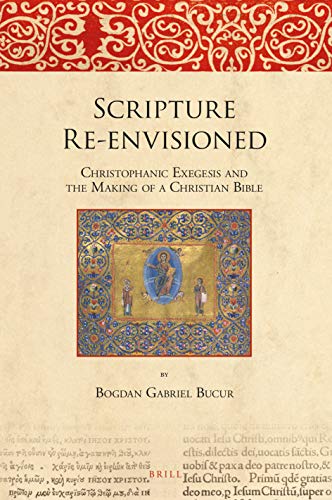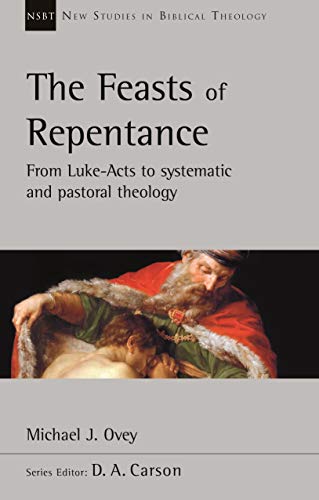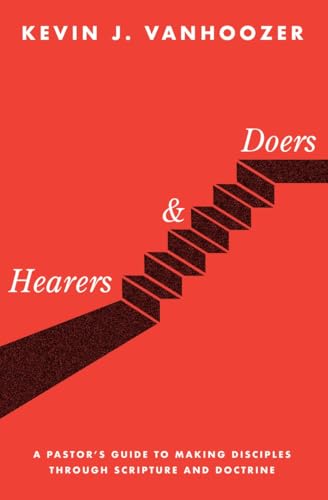The Color of Compromise: The Truth about the American Church’s Complicity in Racism
Written by Jemar Tisby Reviewed By Travis L. MyersI was eager to find in this book a resource for teaching history and waking others to the painful legacies of racism in the United States in general, and among professing Christians in particular. Though I’m not that familiar with “The Witness” or “Pass The Mic,” nor am I a regular reader of Tisby’s blog, I am aware of his perspective and project regarding racial justice. I share his biblical convictions that sin and injustice, just like things good and right, are always expressed corporately in cultural and institutional, not merely personal or individualistic, ways. Some call this “structural evil.” (That’s simply good biblical anthropology which includes an accurate theology of fallen creation and culture[s].) And these unjust social norms are usually perpetrated unknowingly by those who benefit from them. The church is called to do, and be, better in Christ. On the last few pages of the first chapter, Tisby notes the following Scriptures as among those that reveal “the imperative for immediate action” against racial injustice: 2 Corinthians 7:9–10, Revelation 7:9, Matthew 6:10, Ephesians 2:14, and John 19:30. “The church needs the Carpenter from Nazareth to deconstruct the house that racism built and remake it into a house for all nations,” Tisby prophetically invokes. Whereas complicit Christianity “forfeits its moral authority by devaluing the image of God in people of color,” courageous Christianity “embraces racial and ethnic diversity” (p. 24; cf. p. 215). Racism in the church and in broader society inhibits the kind of mutually edifying diversity that God intends by disadvantaging persons of color and thus fueling the division of black and white Christians.
For Tisby, one way to define racism is “prejudice plus power” (p. 16, emphasis original). In fact, this differentiation between racism and mere prejudice is fundamental to his perspective and argument. Even someone who would deny being prejudiced can nonetheless participate in a power dynamic that benefits them and harms others. They may, therefore, need to deal with racism in their life, prejudice aside. Likewise, a person who has recognized and confessed prejudice on their part might realize the need to pursue justice in ways beyond the purely relational to repent fully from racism. “In the United States,” says Tisby, “power runs along color lines, and white people have the most influence” (p. 17). His thesis is that “Christians participated in this system of white supremacy—a concept that identifies white people and white culture as normal and superior—even if they claim people of color as their brothers and sisters in Christ” (p. 16). Again, “Historically speaking, when faced with the choice between racism and equality, the American church has tended to practice a complicit Christianity rather than a courageous Christianity. They chose comfort over constructive conflict and in so doing created and maintained a status quo of injustice” (p. 17). Tisby clearly aims to motivate certain specific responses on the part of his readers today.
When I was growing up in the 1970s and 1980s, “white supremacy” meant the ideology that was explicitly espoused by neo-Nazi skinheads. Because of that baggage, it’s been hard for me to accept the usefulness of the term in today’s discussion about race, politics, and culture(s) in the US (as Tisby employs it: pp. 16, 18, 22, 24, 57, 75, 86, 111, 118, 129, 190 and 201). A careful reading of Tisby’s narrative, though, has helped me empathize with his perspective that “white supremacy” is an accurate way of naming and framing the harmful social and ecclesial outcomes of functioning as if white culture is “normal and superior” (p. 16).
Tisby adds an important caveat: “The goal of this book is not guilt … not to show white believers how bad they are” (p. 22). That said, he explicitly notes the delimitation of his study and its (appropriate) historiographic agenda:
The focus is mainly on racist acts and actors. This emphasis is purposeful. American Christians have never had trouble celebrating their victories, but honestly recognizing their failures and inconsistencies, especially when it comes to racism, remains an issue.… The Color of Compromise undoes the tendency to skip the hard parts of history and directs the reader’s attention to the realities that have been under examined because they challenge the triumphalist view of American Christianity. (p. 20)
The book moves through American history with respective chapters on the colonial era, the age of revolution, the antebellum period, the Civil War, Jim Crow, the civil rights movement, the end of the twentieth century, and the current cultural moment.
The story Tisby tells that disturbed me most was that of the gang rape of a young black woman, Recy Taylor, by six white young men in Abbeville, Alabama in 1944. The men stopped their car to harass, humiliate, and assault Ms. Taylor while she walked home from an evening worship service of Rock Hill Holiness Church (p. 104). The black church has shockingly embodied in many ways and many eras the experience of a persecuted church, something that more missions-minded believers and “world Christianity” focused scholars like myself usually associate with the church in some majority world countries. The accounts of torture, rape, and unjust policies during Southern slavery, Reconstruction, and Jim Crow reminded me of the horrendous legacy of racialized discrimination and even massive amounts of white-on-black terrorism that has been a major part of the history of the United States. The book exposes the uninitiated to the fact that racism was pervasive in areas of the North as well, with sundown laws in many towns (p. 103) and numerous lynchings (pp. 106–7).
Tisby has done a service to the church in the US by pulling together into one volume so much significant national backstory too often neglected. That includes not only white supremacy but the commendable lives of many black scholars, pastors, civil rights activists, and other figures, both male and female. It was so helpful to be reminded by The Color of Compromise of such significant components, dignifying and traumatic, of the historical memory and felt identity of many African Americans, including my brothers and sisters in Christ. By rehearsing this history, white social and political conservatives might start to understand why the majority of their black brothers and sisters don’t share their same political priorities and party. Certain systems that most US citizens can trust actually can make others, however, feel “trapped” (p. 142). Tisby provides a Christian perspective on the Religious Right and Black Lives Matter movements, one that is probably unfamiliar to many white evangelical political conservatives but one that needs to be humbly considered for a better understanding of both phenomena. The foreword by Lecrae exposes white readers to how he, Tisby, and many other believers feel that the church histories and theologies produced by white Christians usually disregard the image of God as it is “on magnificent display” in brothers and sisters of color by ignoring their contributions to the one, holy, catholic, apostolic church (pp. 10–11). White evangelical academics need to hear that perspective, and we need to modify our curricula accordingly (p. 204).
The book is not purely any particular genre, employing historical survey and interpretation with ideological pronouncements and proposals for certain actions in the face of current injustices. That makes it difficult to categorize and, frankly, uncomfortable to critique. My best summary of the book’s method is this: first, present plenty of gut wrenching evidence of explicit racism by whites against blacks in various eras of US history, beginning in the colonial era; then, note the simultaneous presence of white Christians and assert absence (for the most part) of objections or lack of opposition to racism; finally, assume (rather than reason for) the axiom, “The refusal to act in the midst of injustice is itself an act of injustice” (p. 15). Tisby works from the premise that because systemic racial injustice “has always” been present in the US, taking different shapes at different times, then it must still be present today, even though there is no “smoking gun” (p. 160). History matters, and patterns are critically important to consider in exegeting the present, but Tisby’s historical survey can only be a partial argument for “what is” now.
Tisby’s stated goal is to write a history of Christian inaction and often silent complicity. That is admittedly difficult to document. This reviewer was hoping for more primary source material exposing the racism of Christian institutions. Yet Tisby admits that his book is “not an academic history text” (p. 220, n. 13). Rather, his narrative is broad and selective in order to serve as an introduction to the topic and its scholarship (pp. 17–18). He thus engages in a “top down” reliance on secondary sources and avoids historiographic discussion in the main body of the text (p. 219, n. 13). Perhaps that’s why I didn’t feel I ever directly encountered the prominent “chorus of [Christian] complicity” in white supremacy that he rightly notes “drowned out” the few faithful Christian voices (p. 69).
I was already familiar with much of the history covered by The Color of Compromise. But it motivated me to pick up and read James Cone’s The Cross and the Lynching Tree (Maryknoll, NY: Orbis, 2011). That book is more detailed historically (with the greater amount of primary source material I wanted from Tisby), and more lyrical. It wrecked me for days as I solemnly worked through it. More than 4,000 African American men, women, and boys were lynched between 1880 and 1940 in both the North and South. (In 1901, Mark Twain called the nation, “The United States of Lyncherdom” [The Cross and the Lynching Tree, p. 95].) Cone exposes how lynchings were often public—and publicized beforehand—displays of white supremacy around which entire towns might come together, grotesquely, with picnic lunches and eyes ready to gawk. I now better grasp the utterly evil reality of this part of my country’s history. Cone’s book is also more theological in that it articulates, often in their own words, how black Christians in the US found in lynching a way to poignantly understand the suffering and shame of the cross of Christ, whom Gwendolyn Brooks called in 1957, “the loveliest lynchee” (The Cross and the Lynching Tree, pp. 97–98). Cone remarks it was “unthinkingly perilous” to openly fight white supremacy in the deep South during the 1950s and 1960s (The Cross and the Lynching Tree, p. 77). Yet he also shows how black Christians found in Jesus’s “redemptive suffering,” resurrection, “divine presence,” friendship, solidarity, and promises hope to hold onto, write poetry about, and even sing out together in the midst of terror and marginalization. Regrettably, Cone explicitly distances himself—and Martin Luther King, Jr.—from “various classical theories” of the atonement in “the history of Western theology” (The Cross and the Lynching Tree, pp. 84–85, 150).
In the concluding chapter of The Color of Compromise, titled “The Fierce Urgency of Now” (drawn from King’s “I Have a Dream” speech), Tisby uses the mnemonic “ARC” to propose applications (probably from King’s “the arc of the moral universe is long, but it bends toward justice”): Awareness, Relationships, Commitment. For greater awareness, Tisby suggests watching documentaries and diversifying one’s social media feed. For more diversity in one’s relationship network, he suggests pursuing friendships via new hangouts and activities. (I’d add we ought also to pray for friends different from us and from whom we can learn other ways of seeing things and following Christ.) Tisby has much more to suggest for the third major response to racism in the US (“commitment”): create something that speaks to the issue of racial justice, such as a book or Sunday School class; support civic and ecclesiastical reparations (arguing from Scripture and the proposals of PCA pastor Duke Kwon); take down Confederate monuments; learn from the black church how to lament and rejoice in the midst of trial; start a new seminary with a diverse faculty, staff, and board (which is easier to do than change an existing seminary, he says); host “freedom schools” on the history of injustice and conduct pilgrimages for experiential learning; make Juneteenth (June 19th) a national holiday; participate in “the modern day civil rights movement” by pursuing criminal justice reform, etc.; publicly denounce racism; and start a civil rights movement toward certain Christian institutions via sit-ins and boycotts. Here is Tisby the activist in his element.
I found the specter of the pre-civil rights legislation “moderate Christian” (those to whom King’s “Letter from Birmingham Jail” was addressed)—not openly prejudiced, but not yet ready for “the fierce urgency of now”—haunting the book’s pages. For instance, while Tisby notes that Jonathan Edwards Jr. was an abolitionist, the point is to emphasize his father’s “moderate” posture towards slave holding (pp. 50–51). Whereas Charles Finney (pp. 68–69) and Abraham Lincoln (p. 74) are noted as abolitionist(s), Tisby points out (rightly) that neither man perceived or promoted the full equality of blacks with whites in the US. In Chapter 5, Billy Graham is posed simply as a moderate who at times resisted segregation but who also affirmed the “law and order” rhetoric of the 1960s that was heard by African Americans as implicitly racist. (For a more in-depth study of Billy Graham’s ministry, including his complicated relationship with the civil rights movement, see Grant Wacker’s America’s Pastor: Billy Graham and the Shaping of a Nation [Cambridge, MA: Belknap, 2014].) On the other hand, several times Tisby cites Mark Noll’s The Civil War as a Theological Crisis (Chapel Hill: UNC Press, 2006), which I recommend for a well-parsed study of the complex relationship between the abolitionist movement and bible believing Christians. Tisby also draws attention to Olaudah Equiano’s classic calling-out of merely “nominal” Christianity among colonial whites of the eighteenth century (pp. 30–31). Thomas Kidd’s new book, Who Is an Evangelical? The History of a Movement in Crisis (New Haven: Yale University Press, 2019), is a sustained and nuanced treatment of the multi-form white American evangelical movement’s variegated relationship with race, politics, and social action. I think Kidd, like Equiano, signals the significant theological, pastoral, and apologetic reality that not all who claim evangelical identity may actually be born again. Tisby, however, doesn’t dwell on this factor.
Racism was for too long treated in US pop culture and the public schools as merely a historical (and Southern) phenomenon, as a wrong that others had perpetrated. That mythology removed ordinary contemporary majority culture people, especially Northerners, from the stain of it. I agree with Tisby and others that our society has failed to adequately deal with the history of slavery and segregation in a way that would lead to greater understanding, compassion, mutual trust, and justice. Something like a truth and reconciliation commission would be helpful. Making Juneteenth a national holiday to commemorate Emancipation in 1865 seems obvious to me. The assumption/assertion that whites who are not engaged in the remedies that Tisby proposes are in fact complicit in racism today is, of course, the most controversial aspect of the book. Indeed, it’s a foundational axiom upon which he builds his case for action. Each of his (ARC) prescribed responses should be considered, perhaps debated, on its own merit(s). To fairly weigh those merits, we must turn with humble and courageous urgency to other sources.
Travis L. Myers
Travis L. Myers
Bethlehem College & Seminary
Minneapolis, Minnesota, USA
Other Articles in this Issue
What are we to make of Cultural Marxism? This article seeks to answer that question, first, by outlining the key elements and legacy of classical Marxism; second, by exploring the neo-Marxism of Antonio Gramsci; third, by assessing the main ideas and impact of “the Frankfurt School”; and, fourth, by offering some reflections on (i) the links between these thinkers and various contemporary developments, (ii) the wisdom of employing the term Cultural Marxism, and (iii) how Christians should respond to the current “culture wars” that are polarizing the Western world.
The diverse essays in Stanley Rosenberg’s edited volume Finding Ourselves After Darwin: Conversations on the Image of God, Original Sin, and the Problem of Evil (Grand Rapids: Baker Academic, 2018) offer a Christian analysis of the human person in light of evolutionary thinking...
Do Formal Equivalent Translations Reflect a Higher View of Plenary, Verbal Inspiration?
by William D. MounceThe article begins by establishing five categories of translation theory and argues that functional translations like the NIV do in fact reflect the meaning of every Greek word, but not in the same way as formal equivalent translations do...







